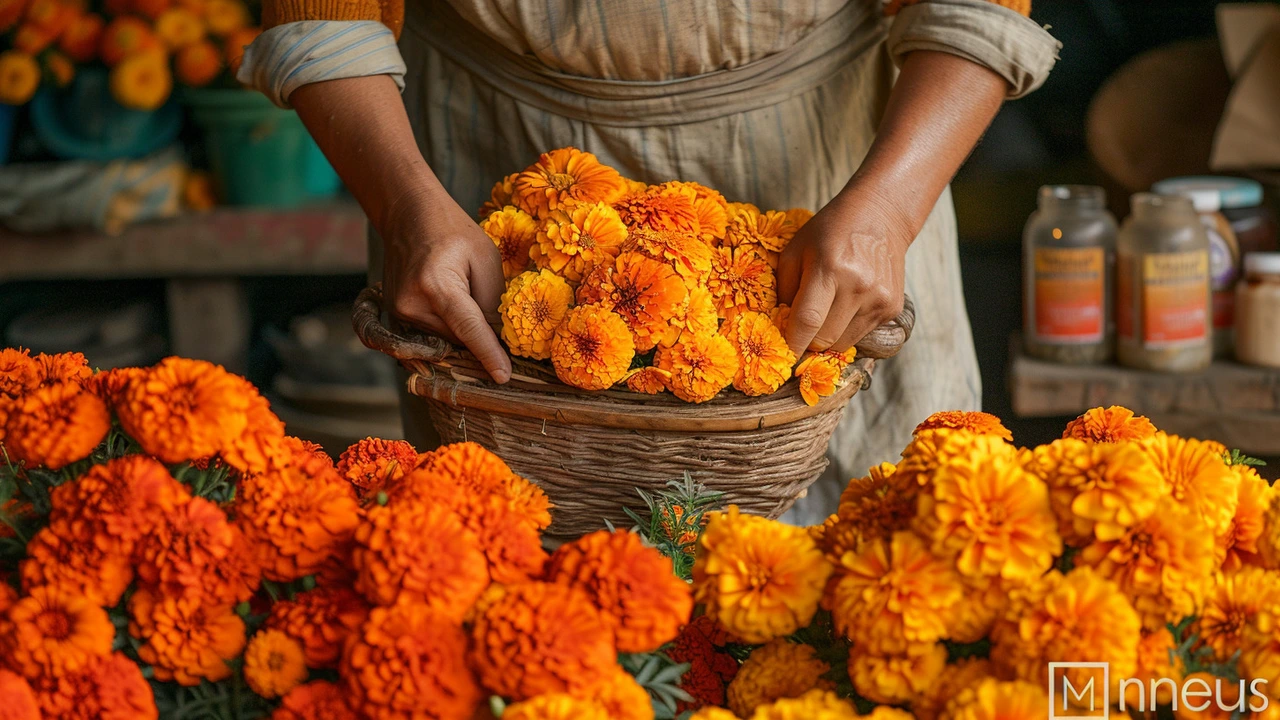Tagetes (Marigold): What It Is and Why You Might Want It
Tagetes is the marigold family most gardeners know for bright orange and yellow blooms. Beyond looks, people use Tagetes for companion planting, simple home remedies, crafts, and even aromatic uses. This page gives clear, practical tips: how to grow it, easy home uses, and basic safety so you can try it without guesswork.
Growing Tagetes: fast wins
Want quick color and low fuss? Plant Tagetes in full sun and well-drained soil. They love heat and tolerate poor soil better than many flowers. Sow seeds after the last frost, or start indoors 4–6 weeks earlier. Space plants 8–18 inches apart depending on variety to avoid crowding.
Water regularly until established, then cut back—marigolds don’t like soggy roots. Deadhead spent blooms to keep plants flowering longer. If you want taller plants, pinch the growing tips when they’re small; that encourages side shoots and more flowers.
Common problem: whiteflies, spider mites, or powdery mildew in humid conditions. Keep leaves dry when watering and give plants good air flow. Remove heavily infested plants to protect the rest of the bed.
Simple uses and safety tips
Companion planting is the most useful trick: Tagetes can help deter nematodes and some pests when planted near veggies like tomatoes and potatoes. It’s not a magic cure, but it reduces pest pressure when used as part of a garden plan.
People also use Tagetes flowers for home remedies and crafts. A basic flower infusion: steep 1 tablespoon of dried petals in a cup of boiling water for 10 minutes, strain, and use as a mild compress for minor skin irritation. Do a small patch test first—some folks get contact dermatitis or allergic reactions.
For topical use, dilute any marigold oil heavily (typically 1–2% in a carrier oil). Avoid using essential oil neat. If you’re pregnant, nursing, or on medication, check with your healthcare provider before internal use or regular topical use.
Where to buy: seeds and live plants are widely available at garden centers and online. Dried petals, tinctures, and essential oils come from herb shops—choose suppliers with clear sourcing and quality checks. Organiс or third-party-tested products reduce the risk of contaminants.
Quick safety checklist: do a patch test for skin use, avoid large internal doses, keep products labeled and away from kids, and stop use if you get a rash or feel unwell. For any medical condition, ask a health professional before using Tagetes as a remedy.
If you want specific how-tos—recipes, companion-plant layouts, or sourcing tips—scroll the tagged posts below. They cover real-world tips on using plants and safe ways to buy herbal products so you can make smart choices fast.

